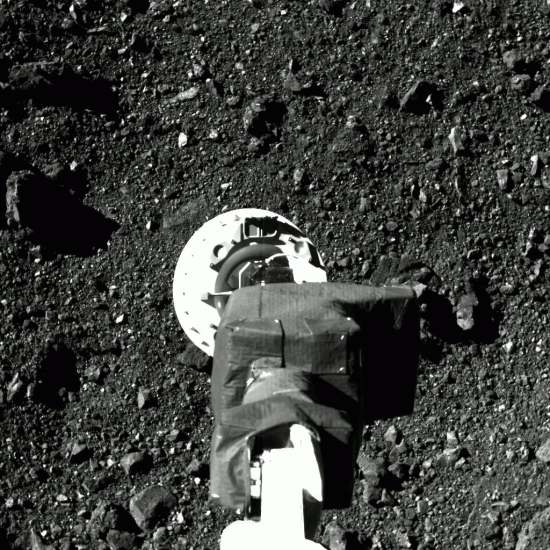October 23, 2020
Bad theories mean bad designs.
When the Osiris-Rex mission was planned and organized, there was not much known about Bennu, journey’s end for the spacecraft. Osiris-Rex was designed to collect dust and sandy soil from the surface of an asteroid and then return it safely to Earth.
Many ideas guide mission team members. Among them are ideas about asteroid composition. About 15% of all asteroids are pairs. Those celestial doublets are said to result from sunlight causing an asteroid’s spin-rate to increase. Since asteroids are thought to be loosely compacted “rubble piles”, increased angular momentum is thought to force the rocky conglomerate apart, forming another rubble pile in orbit about the first. That is why mission specialists built Osiris-Rex the way they did.
The rubble pile theory is used to explain mass anomalies that are seen in asteroid crater studies. Some asteroid craters are so large that the asteroid, itself, should no longer exist, the impact should have blown it into fragments. Asteroids like Mathilde, where one third of a hemisphere is missing, are “mysterious”. The conventional explanation is that asteroids are loosely compacted. It is thought that, when something hits them, they respond like big piles of sand, absorbing the impacts—there is no hard crust, so they do not fracture.
Gravity on asteroids is minute, so banding, landslides, and layering of surface rocks is said to be from micro-meteor impacts “shaking” them. Over long periods of time, the shaking sorts materials by size and density, in the same way that a jar of sand and pebbles will sort itself when it is shaken. According to the rubble pile theory, that is. It was this idea that drove the sample collection device design.
As Osiris-Rex got closer to Bennu, the team was ready. The surface appeared to correspond with everything they expected to see, until one day, some surprising images arrived. Bennu was not a sandy rubble pile, it was a collection of boulders, ranging from a few millimeters to several meters in size. “Now what?” they thought.
Expecting to settle-in and start operations, NASA scientists had to begin an exhaustive study of the asteroid’s surface, so that they could find a place to collect their samples. The regolith was so rocky and jagged that attempting to touch Bennu could destroy Osiris-Rex. Their collection device was something similar to the look of an automobile air filter; it was not made to collect rocks. Finally, after months of study, Bennu was “tagged”—material from the surface was agitated and flew up toward the instrument.
The mission team is now waiting to see if their efforts were successful.
Stephen Smith
The Thunderbolts Picture of the Day is generously supported by the Mainwaring Archive Foundation.













